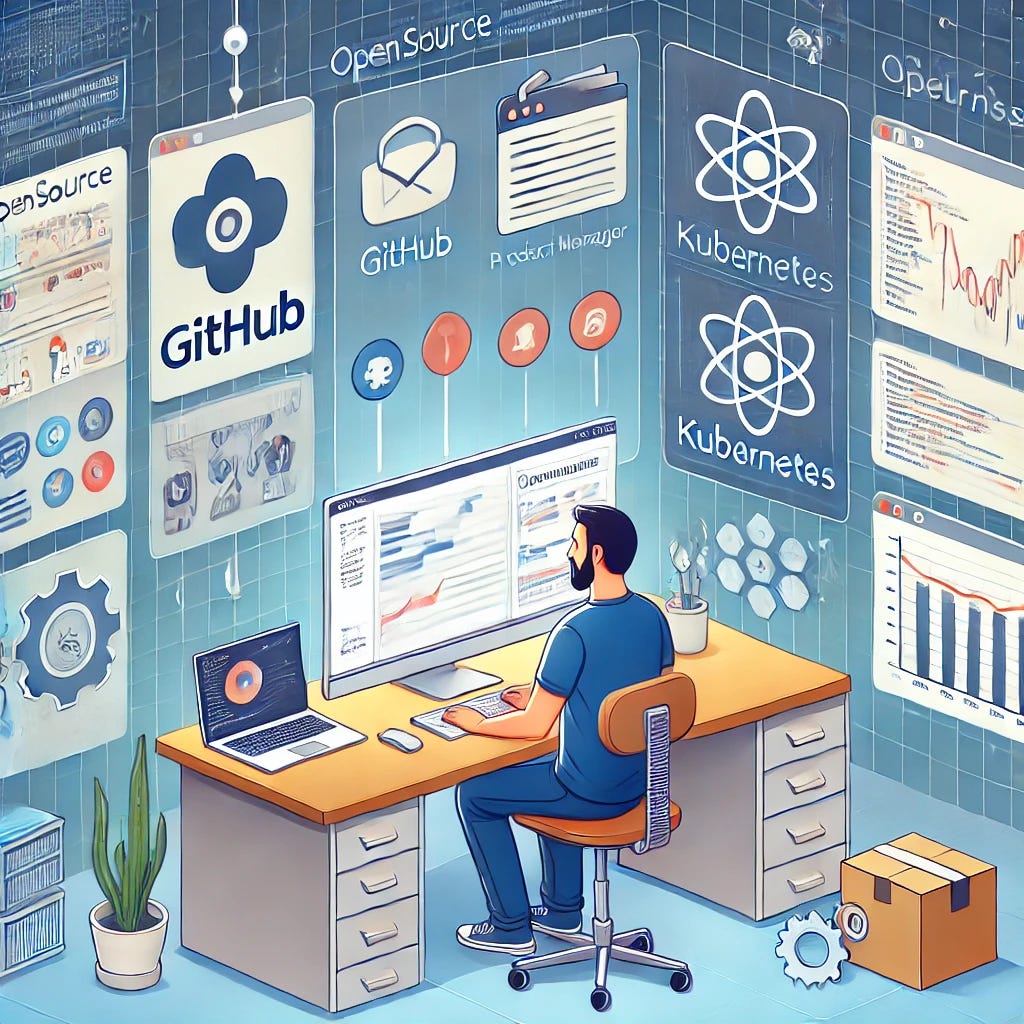The Open Source Edge: 5 Ways PMs Can Gain Leverage #

As a product manager in a commercial open-source software (COSS) company, you inherit unique advantages that traditional software vendors don’t. Your user base isn’t just your paying customers — it includes a massive global community of developers using your product for free. If leveraged correctly, this can be a powerful asset.
In this article, I will explore some advantages you can and should be leveraging.
Faster Issue Identification #
With an open-source project, you don’t rely solely on internal QA or customer support tickets to identify issues. Millions of free users act as an extended testing network, reporting bugs via GitHub issues, forums, and social channels. This crowdsourced feedback helps to surface critical technical problems early.
However, it’s important to prioritize effectively. The most vocal users don’t always represent the most impactful issues. Balancing community-driven reports with enterprise needs and strategic goals is key.
Rapid Product Feedback #
Your community isn’t just a source of bug reports — it’s an always-on feedback loop. You can engage users through GitHub discussions, Slack, Discourse forums, polls, and idea boards. At Nexus Repo Manager, I helped launch an Ideas Portal to crowdsource feature requests, capturing thousands of free users’ upvotes, comments, and valuable context.
Unlike traditional software vendors, COSS companies can rapidly validate ideas before investing engineering resources , reducing risk and increasing confidence in product decisions.
Built-in Product-Led Growth (PLG) #
Most SaaS companies spend heavily on free trials and onboarding to acquire users. Open-source companies already have a massive installed base — your challenge is to create a PLG journey around them.
Your strategy should identify friction points where paid features create tangible value. At Sonatype, we built a free security scanner for Nexus Repository, which identified vulnerabilities but required a paid plan for remediation—this naturally guided business users toward an enterprise upgrade without disrupting their workflow.
Community-Powered Product Demos #
Some of the best product demos don’t come from your sales team — they come from your community. Open-source users often build creative, high-impact use cases that showcase your product’s potential better than any scripted demo.
At Plotly, our most compelling data visualizations weren’t from internal teams but from open-source contributors. We actively encouraged this by running community challenges, highlighting user-generated content, and integrating the best examples into our marketing.
Accelerated Developer Advocacy & Adoption #
In traditional software, you need dedicated evangelists to drive awareness. In open source, your passionate user base does this for you. If you engage them effectively — through Discord, conferences, and contributor programs — they become your strongest advocates, organically spreading adoption in their organizations.
Being a PM at a COSS company means thinking beyond just customers — you’re managing an ecosystem. If you can harness community insights, guide free users to paid value, and amplify community contributions, you unlock a growth engine that proprietary software companies can’t easily replicate.
This article was originally published on Medium as part of the BoFOSS publication.
